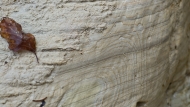Thanks to rich locations of high quality iron ore, the Julian Alps were a very important strategic area for almost 3,000 years. Although the first records of mining date back to the Iron Age (ca. 800 BC), the activity reached its peak in the Roman times and the Middle Ages.
The largest and most widely known iron industry centre in the Iron Age and antiquity was Bohinj. Iron ore was dug and collected on the mid-altitude and high-altitude pastures of the entire Pokljuka plateau, Gorjuše, Vogel, Studor alps, Velo polje, and on the Klek, Lipanca and Zgornja Krma pastures and the Mežakla plateau.
The traces of ancient and medieval mining in high-altitude mountains have been preserved to the present day. On certain pastures, typical shallow ore caves can be seen, and high above the tree line one can admire the remains of old stone-paved paths along which iron ore was transported to the smelting furnaces in the valley.
The traces of medieval mining and iron industry in the valley of Trenta and on the slopes above the valley are evident in the form of deep mine shafts, dug out in the slopes of the mountains Srednjica, Mojstrovka and Prisank.
In addition to iron ore, Rudnica in Bohinj was also a popular site for digging up aluminum ore, bauxite, which is a weathering product of limestone and claystone. There were also a few collecting sites of manganese nodules (Mangarsko sedlo pass, Dolina Triglavskih jezer (Triglav Lakes Valley), Bovški Gamsovec), whereas lead, zinc, iron, and baryte were extracted in the wider area of Log pod Mangartom.
In the group of non-metallic mineral deposits, people soon learned to extract lake chalk deposits in Bohinj, Radovna, and Mojstrana.
Thank you.















